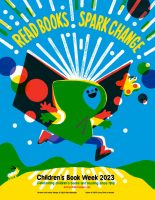The mission of the Children’s Book Council (CBC) is to support the children’s publishing industry by connecting publishing professionals and creators with young readers. And they find a lot of ways to fulfill that mission. Take a look at some of the things the CBC is doing in the world of children’s books.
The CBC Diversity Initiative

Founded in 2012, the CBC Diversity Initiative advocates for an inclusive and representative children’s publishing industry. The initiative is rooted in the belief that ALL children should see themselves and their worlds reflected in books.
As part of this initiative, the CBC champions diverse book creators and their books, and they create and maintain diverse reading resource lists that can be used by teachers, librarians, booksellers, and parents.
The #FReadom Movement

The CBC actively supports #FReadom. This movement was launched by Texas librarians in 2021 as a way to combat book bannings. #FReadom resources are intended to highlight the positive impact of intellectual freedom, celebrate school libraries and librarians, and draw attention to the need to make diverse books available to young readers.
The CBC has made available six different coloring pages to support the #FReadom movement. Download the free coloring pages here.
Children’s Book Week

As part of their Every Child a Reader program, the CBC designates two separate weeks during the year to celebrate the joy of reading. Established in 1919, this is the longest-running national literacy initiative in the country. This year, Children’s Book Week will be celebrated May 1-7 and again November 6-12.
This year’s theme for Children’s Book Week is Read Books. Spark change. You can download printable resources, including the free poster created by Rilla Alexander that speaks to the power of books and stories to inspire positive change.
Partnering with SLJ
In 2022, the CBC partnered with School Library Journal (SLJ) to create two posters celebrating the freedom to read. First, they worked with Penguin Random House and artist Rafael Lopex to create the “Open Books, Open Doors” poster to promote free expression and access to diverse books. You can download Lopez’s poster for free.
Next, they worked with artist Chan Chau to produce a poster themed “Imagining a world with you.” The poster celebrates LGBTQIA+ children and teens, and it was showcased and made widely available by multiple organizations, including the CBC. You can download a copy of Chau’s poster for free.
Banned Books Week

The CBC also partners with the American Library Association (ALA) to support and promote Banned Books Week. Launched in 1982, this annual observance has become more relevant now than ever. This year, Banned Books Week will be observed October 1-7. Mark your calendars!
Free downloads and information from last year’s Banned Books Week observance are still available on ALA’s website. While there, you can also find “Social Shareables” to show your support on multiple social media platforms.
Learn more about the Children’s Book Council and all their initiatives to promote free access to books and celebrate the power and wonder of books for young readers by visiting cbcbooks.org.




